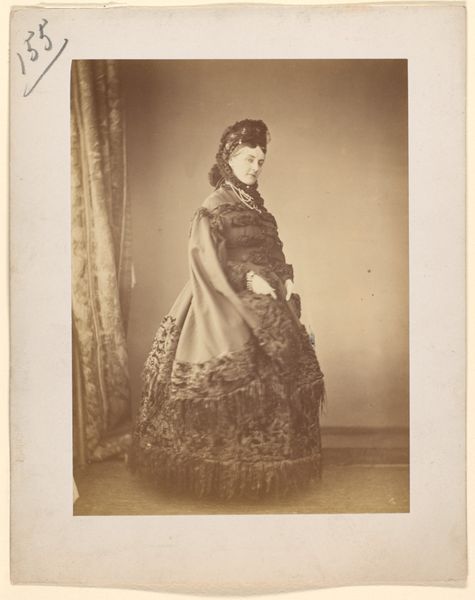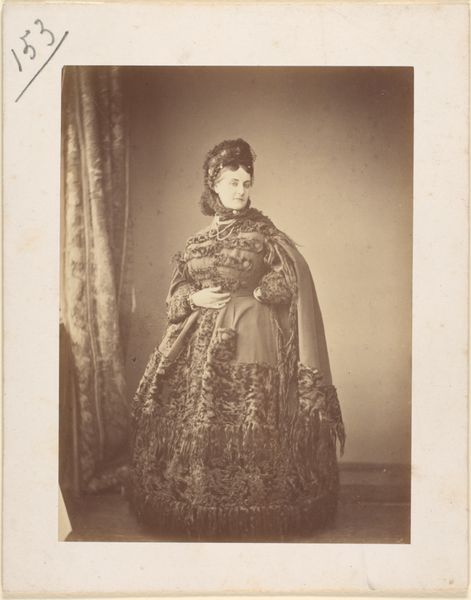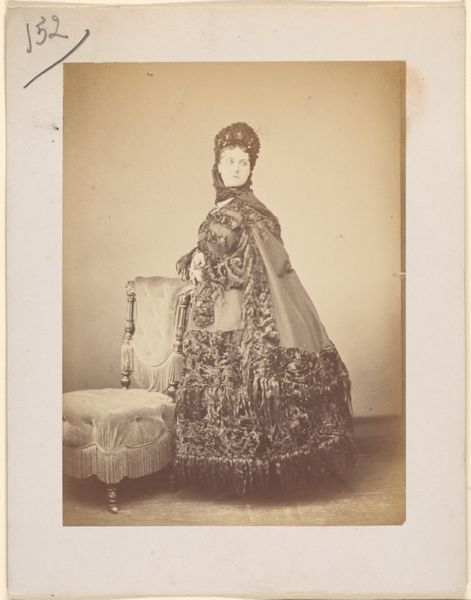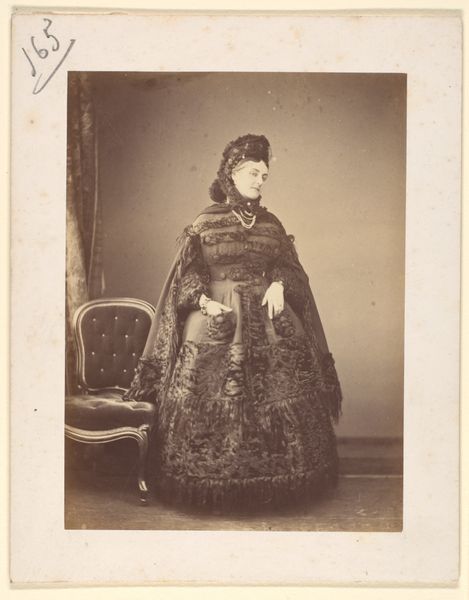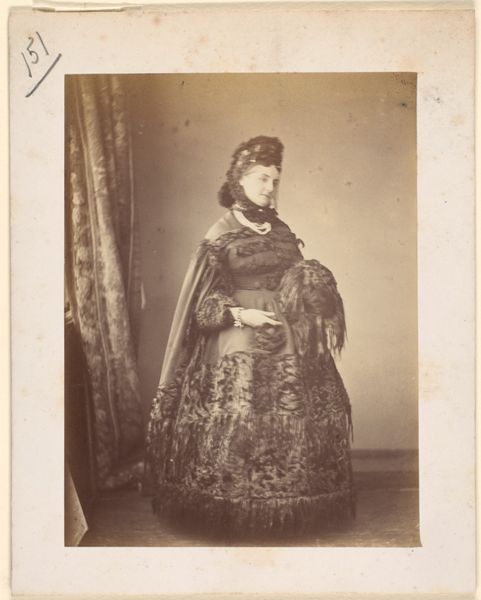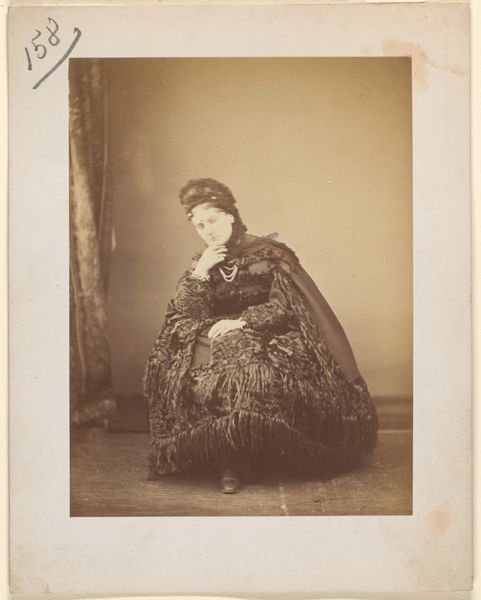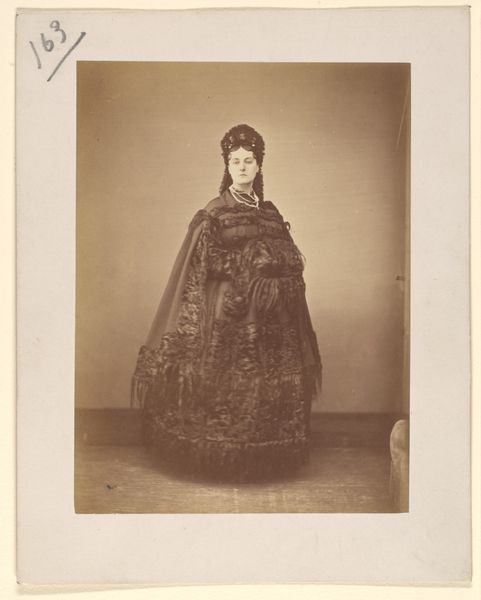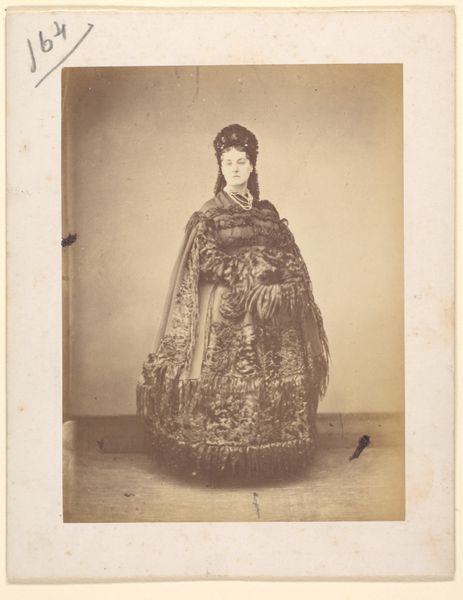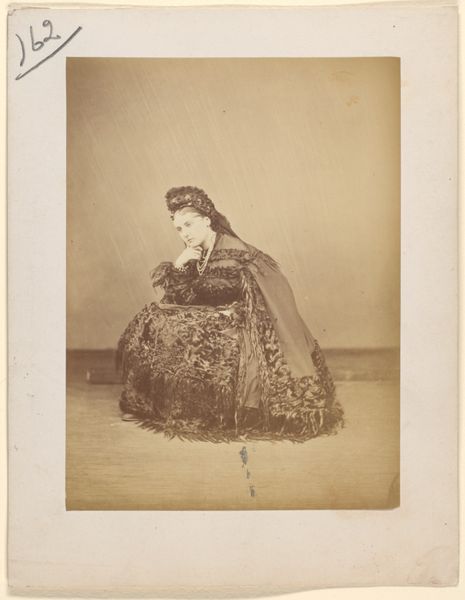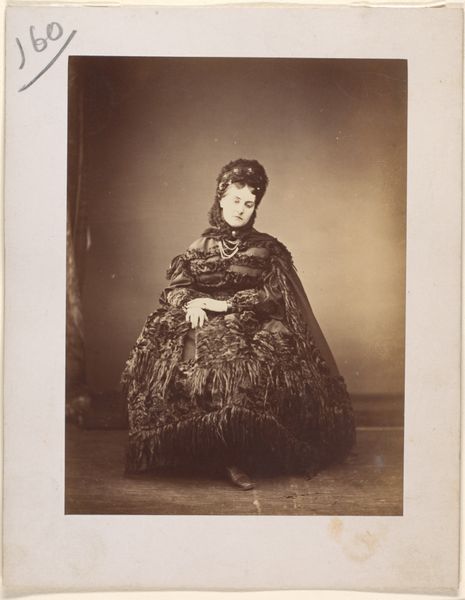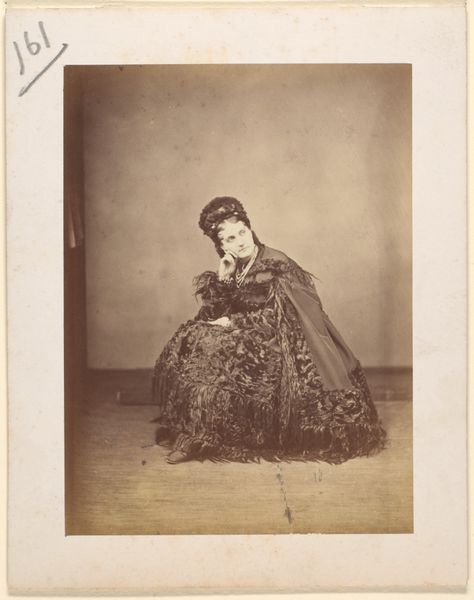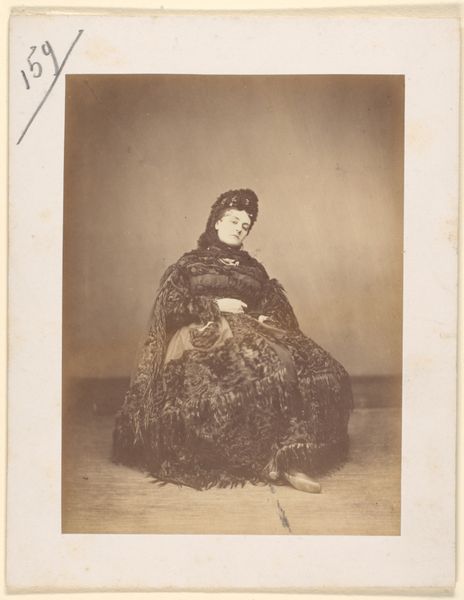
Copyright: Public Domain
Curator: The portrait before us, "Le Caracul (L'Astrakhan)," was taken in the 1860s by Pierre-Louis Pierson. It's a stunning example of a daguerreotype, a very early photographic process, now housed at the Metropolitan Museum of Art. Editor: There's such a dreamy, almost ethereal quality to this portrait, due in part to the monochromatic palette and the soft focus characteristic of the daguerreotype. I'm particularly drawn to the textural interplay—the woman’s elaborate dress seems to swirl around her. Curator: Yes, the material culture on display speaks volumes. The lavish fur accents—presumably astrakhan, giving the image its name—immediately signify a certain social standing, but I wonder how such elaborate presentation plays into gender roles of the era, presenting femininity as inherently tied to extravagance and display? Editor: The folds of fabric are interesting too, notice how the dark fringe at the bottom adds visual weight, grounding the image. Structurally, her almost centralized position creates a powerful sense of balance. The soft gradations in light emphasize a controlled and refined formal approach. Curator: And we shouldn’t forget the implications of early photographic practices. These portraits were revolutionary, offering new avenues for representation but also reflecting power dynamics inherent in who had access to be seen and how they were portrayed. Think about the implications for wider representation—who could afford the luxury of photographic portraiture? Whose image mattered enough to be captured and preserved? Editor: An important point. It shifts the gaze. And yet the pure detail offered by the daguerreotype is astounding when you compare it with what came before— the surface almost shimmers! I see something compelling in the rendering of light and shadow across her face. Curator: For me, it brings up issues surrounding wealth, labor, and visibility that still resonate today, revealing complexities inherent to representations of women in art. This image prompts essential questions about what photography can and cannot reveal, challenging assumptions that link artistic creation to objective truths. Editor: I agree—while understanding its sociohistorical context is vital, one can also appreciate Pierson’s expert craftsmanship and attention to compositional harmony in "Le Caracul." A rich, compelling visual object, definitely. Curator: Ultimately, it is this tension between form and context that allows for this photographic artwork to continually incite insightful observations and discussion.
Comments
No comments
Be the first to comment and join the conversation on the ultimate creative platform.
